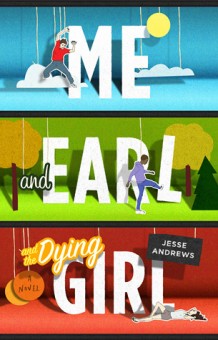
“My mom is making me do this,” blurts out Greg (Thomas Mann), the self-described “terminally awkward” high-school senior who narrates this engagingly quirky, coming-of-age comedy/drama. “This” is being nice to Rachel (Olivia Cooke), a brainy classmate he hardly knows who has just been diagnosed with leukemia. Giving him 15 minutes to make a better impression, Rachel discovers that the socially inept but witty Greg actually does make her smile, and soon they are hanging out on a regular, but strictly platonic, basis.
Most of the time Greg can be found with Earl (RJ Cyler, the stand-out in a cast of uniformly excellent performances), his best –- and heretofore only –- friend. Earl is completely comfortable in his own skin. Despite growing irritation with Greg’s inability to see beyond himself — especially as regards Rachel, whom Earl thinks Greg doesn’t appreciate enough –- Earl shrugs off Greg’s insecurities. Friends since kindergarten, they share a passion for art-house cinema. They spend their school lunch hours watching classic movies (Werner Herzog films starring Klaus Kinski are among their favorites) and their off-hours writing, shooting, editing and starring in parodies of the movies. Their conversations are peppered with film dialogue and references that will delight cineastes but will probably pass over the heads of less movie-obsessed audiences (most of whom will, nonetheless, enjoy the film). Their video titles include “The 400 Bros,” “2:48pm Cowboy” and, my personal favorite, “A Sockwork Orange,” featuring hand puppets made out of socks. On top of everything else, “Me and Earl” is a love letter to filmmaking in general and art house cinema in particular.
Written by first-time screenwriter Jesse Andrews (adapting his own novel), the script is smart, highly imaginative and laugh-out-loud funny, even as it tackles a number of serious, thoughtful themes –- and, yes, sad moments. Witty banter and accessible (if occasionally broad) characters, played to perfection by the entire cast, are only part of the film’s charms. Another strength is Alfonso Gomez-Rejon’s direction: the staging of scenes, camera movement, wide-angle perspectives, the emphasis on deep-focus and the use of stop-motion animation and puppets.
Gomez-Rejon is a remarkably assured director. This is his second feature but he cut his teeth as a personal assistant to both Martin Scorsese and Alejandro Inarritu and has worked second-unit on numerous films and TV shows. His style clearly has been influenced by the films of Wes Anderson, both in terms of the movie’s tone and the inspired way he employs production design, lenses and camera movement in the service of storytelling. It can’t hurt that he is working with the great South Korean cinematographer Chung-hoon Chung, probably best known for his collaborations with director Chan-wook Park, whose harrowing, ultra-violent thrillers (“Old Boy,” “Sympathy for Lady Vengeance”) could not be further from the demands on “Me and Earl.”
“Me and Earl and the Dying Girl” was a monster hit at the 2015 Sundance Film Festival, picking up both the Grand Jury Dramatic Prize and the Audience Award in the dramatic category.